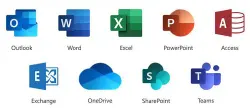Our Tried and Tested Website Design Phases
Unlocking the Secrets to a Successful Website
In the digital age, the success of your business is often tied to the quality of your website. A vibrant online presence can enhance your brand, attract new clients, and open doors to global opportunities.
Yet, understanding the website development process is crucial to crafting a site that stands out.
Let’s journey through the phases of creating a new website, helping you lay the groundwork for an engaging, user-friendly, and aesthetically pleasing digital space.
The Genesis: Conceptualizing Your Online Presence
Before delving into wireframes or worrying about web designs, you must first ask and answer: “What is the purpose of my website?”
Establishing a clear objective sets the cornerstone for all subsequent actions.
Phase 1: Defining Your Goals
Begin by outlining your vision. What are you aiming to achieve? Are you building an e-commerce platform, an information hub, or something else entirely? Document your goals meticulously, ensuring clarity and focus throughout the development journey.
Phase 2: Audience Analysis
Understanding your audience is paramount. Explore the needs, preferences, and behaviors of your target users to tailor a website that resonates and engages.
Phase 3: Competitive Research
Scan the market to identify what your competitors are doing right or wrong. This invaluable intelligence can inform your strategy, helping you stand out in the crowded digital landscape.
The Blueprint: Wireframing the User Experience
In this stage, ideas take a tangible shape through wireframes – the architectural blueprints of your website.
Phase 4: Crafting Wireframes
Sketch out the structural layout of your site with wireframes. Focus on the organization of content, navigational flow, and the placement of key elements, paving the way for a user-centered design.
UX: The Heart of Wireframing
Integrate user experience (UX) design from the outset. Prioritizing your users’ needs over internal preferences ensures natural, intuitive interactions and removes impediments that might otherwise inhibit engagement.
Tools of the Trade
Wireframing doesn’t demand high-end tools; even rudimentary sketches on paper can serve the purpose. Yet, employing digital tools can streamline the process, facilitating collaboration and iteration. Utilize resources like A List Apart and Behance for inspiration and best practices.
The Artistry: Weaving Web Design Magic
With wireframes in place, web design breathes life into your site, marrying fine art with functionality and ensuring mobile and SEO optimization.
Phase 5: Establishing a Style Guide
Your website’s style guide is the compass that guides aesthetic decisions. It codifies the color scheme, typography, and visual language, ensuring consistency and brand alignment across all pages.
Phase 6: Designing over Wireframes
Superimposing your design elements onto the wireframes fleshes out the user interface (UI). Visual and interactive components come together to evoke the final look and feel, while always referencing the underlying structure validated in the wireframing phase.
Design vs. Web Design
Web design diverges from generic design in its inherent adaptability.
A web designer doesn’t just create; they forecast how designs will fare across multiple devices and interfaces, always optimizing for engagement and interaction.
Front-End Development: The Intersection of Design and Code
Web designers often stride into the terrain of front-end development, translating artistic designs into HTML, CSS, and JavaScript. This vital phase fortifies that the aesthetic intent is captured flawlessly in the live environment.
The Phases Summarized:
- Goal Definition: Set your objectives and identify the purpose behind your website’s existence.
- Audience Analysis: Paint a clear picture of your target audience’s needs and preferences.
- Competitive Landscape: Gauge your niche market, recognizing opportunities for distinction.
- Wireframing: Construct low-fidelity layouts to establish the foundation of the user experience.
- Style Guide Creation: Develop a consistent visual language for your website.
- Design Implementation: Materialize your site’s interface by applying designs to the wireframe structure.
- Front-End Development: Transform designs into functional, interactive web pages.
Harnessing SEO and Mobile Optimization
Every stage of web development must pay homage to search engine optimization (SEO) and mobile responsiveness. Optimizing for SEO means ensuring your content is discoverable, relevant, and primed to rank on search engine results pages (SERPs). Mobile responsiveness guarantees accessibility and usability regardless of the device used to browse your site.
The Intersection of Vision and Practicality
Building a website is a balancing act between artistic vision and technical constraints. Remember, always prioritize the user. By following this structured approach, infusing best practices, and embracing collaboration, you’re setting the stage for a successful, standout online presence.
Engage your users, evoke emotion, and embolden your brand with a website that’s not only a digital placeholder but also a compelling storyteller of your brand’s narrative.
Integrating SEO Best Practices
As you embark on content creation, infuse every page with SEO-rich elements. Engage in keyword research to understand the terms your audience is searching for, and weave these seamlessly into your content. Remember that relevance and quality are at the heart of good SEO – your aim is to provide value to your visitors, not just to rank.
SEO is intertwined with the E-A-T principle (Expertise, Authoritativeness, and Trustworthiness), which is vital in Google’s ranking systems. Demonstrate your brand’s expertise with well-researched and accurate content, establish authority through quality backlinks and user engagement, and ensure trustworthiness by securing your site and providing clear, honest information.
Responsive Design for All Devices
Responsive design isn’t an option—it’s a necessity. Users might access your website through a smartphone, tablet, laptop, or desktop, and your site needs to look flawless on each one. Utilize flexible grids, images, and an intelligent use of CSS media queries. Test your designs on multiple devices to ensure consistency and functionality.
Content Development and Strategy
Content is the essence of your website. Develop a content strategy that aligns with your goals and speaks directly to your audience. Create captivating headings, valuable and informative body copy, and strong calls-to-action (CTAs) that guide users toward conversion.
Your writing should resonate with your audience, solving their problems and answering their questions. Every piece of content should be crafted with intention and purpose, because if it doesn’t serve your user, it doesn’t serve your brand.
Testing and Launch
Before launch, rigorous testing is crucial. Check every link, button, form, and functionality across different browsers and devices. Pay special attention to load times, as site speed significantly affects user experience and SEO rankings.
Once testing is complete and all issues are resolved, it’s time to go live. However, remember that a website is never truly finished. Continual monitoring, updating, and optimizing are necessary to keep up with user feedback, technological advancements, and changing SEO landscapes.
Continuous Improvement: Analytics and Optimization
Post-launch, employ analytical tools like Google Analytics to monitor user behavior and site performance. This invaluable data informs iterative changes and optimizations to refine user experience and conversion rates over time.
Always be on the lookout for opportunities to enhance site content, structure, and performance. Regular updates to content and design keep your website fresh and relevant, encouraging repeated visits and sustained interest.
Remember, the journey to a successful website is iterative and demands a blend of creativity, technical savvy, and strategic thinking. By immersing yourself in the web development process, prioritizing SEO, E-A-T, and user experience, you’ll craft a website that not only ranks well but also delivers a powerful, lasting impression to your audience. Engage, inspire, and convert with a website that embodies the essence of your brand and the spirit of your mission.







